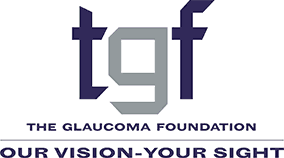
While elevated intraocular pressure (IOP) is the most commonly recognized modifiable risk factor for glaucoma, the role of IOP fluctuation throughout the day and night is being studied as a factor in glaucoma disease development and progression and management.
IOP varies considerably during the 24-hour cycle. A single eye pressure measurement at any given time on any given day in the doctor’s office is a snapshot of what the eye pressure truly is on average. Multiple measurements at different times over a period of days or weeks can monitor how great the range of fluctuation is between visits and help doctors manage their patients’ glaucoma.
IOP fluctuations have internal causes or can develop from external factors. Internally, IOP can depend on the balance of aqueous humor production, on how easily aqueous humor leaves the eye, on the pressure in the veins on the surface of the eye, and the uveoscleral outflow – a secondary pathway for aqueous humor.
IOP also fluctuates because of body position, time of day (peaks at night, troughs during the day), blood pressure, and the related concept of ocular perfusion pressure, stress or pain levels, water consumption, and more. Some examples:
- Pressures can increase or decrease depending on the patient’s position in the chair — the best is a neutral position. Regarding body positions, bending one’s neck forward or backward, lying down, bending over, all can cause IOP to rise.
- Studies have shown that peak IOP occurs at night or in the early morning hours in two-thirds of glaucoma patients. IOP has been shown to increase by 3 to 4mm Hg when a patient is lying flat face upward.
- The force used to bring blood into the eye is the ocular perfusion pressure – a variable that can be considered as the difference between blood pressure and eye pressure. Factors that cause IOP to rise will have an effect on lowering perfusion pressure; factors that lower blood pressure also will result in lower perfusion pressure. In situations where blood pressure drops and eye pressure increases overnight, there is a greater risk for glaucomatous damage.
- Drinking a large volume of water quickly causes pressure to rise for a short time – up to 6mm Hg within five minutes.
- An increase or decrease in stress causes hormonal changes that can push IOP levels up or down.
And the list goes on. While doctors can measure eye pressures at different times of day over several visits, the availability of 24-hour IOP information remains a goal. There are devices like smart contact lenses and implantable sensors in the research and clinical trial pipeline. The iCare HOME tonometer is the first device available to patients for measuring intraocular pressure at home. Although very expensive, there are rental opportunities, as described in the May issue of our newsletter.
